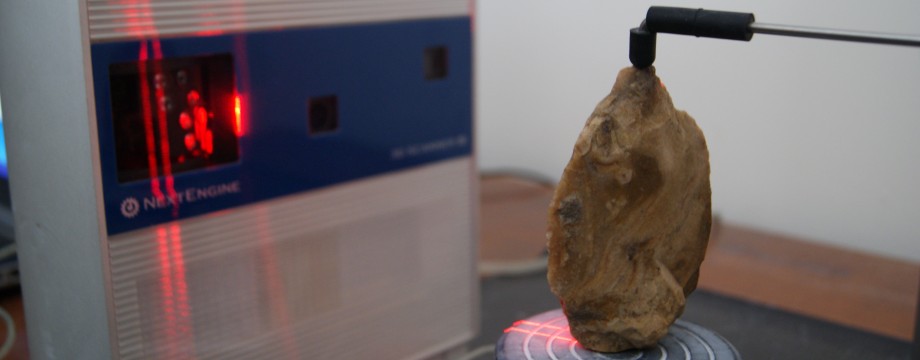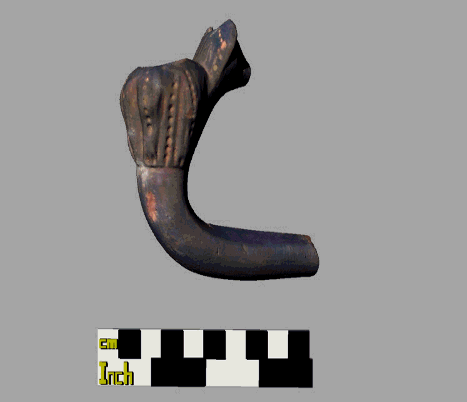by Bernard K. Means, Director of the Virtual Curation Laboratory (VCL)
Today’s animation is the scapula of an Anatolian lion recovered from the site of Köşk Höyük, which is located in central Turkey. The scapula of this extinct animal was made available for scanning by Ben Arbuckle, who is an anthropology faculty member at the University of North Carolina-Chapel Hill (UNC-CH). It was scanned during a workshop I led at UNC-CH’s Davis Library entitled “Applications of Digital Visualization through 3D Laser Scanning and 3D Printing.” Details on this scanning workshop can be found here. Schnitzler (2011) discusses the distribution of the North African-Asian lion through time, including providing archaeological evidence. Dr. Arbuckle’s zooarchaeological studies at Köşk Höyük are available here.
UPDATE: The following information is provided by Dr. Arbuckle:
Specimen KSK16067 is a portion of a scapula (shoulder blade) of an extinct subspecies of lion (Panthera leo) which inhabited Turkey, Syria and Iran until perhaps as late as the 19th century. It was recovered from the site Köşk Höyük, located in the Niğde province of central Turkey during the 2008 excavation season. Köşk Höyük represents the remains of a small village occupied in the late Neolithic and Early and Middle Chalcolithic periods (c. 6200-4500 BC). Although its inhabitants were farmers and herders, they also hunted abundant wild game in the region including wild horses and asses, deer, boar, and bear. This specimen, the only big cat to the recovered at Köşk was found in area E/7 in a shallow pit feature filled with burned debris including bone and charcoal dating to c. 6000 BC.
Schnitzler, Annik
2011 Past and present distribution of the North African–Asian lion subgroup: a review. Mammal Review 41:220–243.











